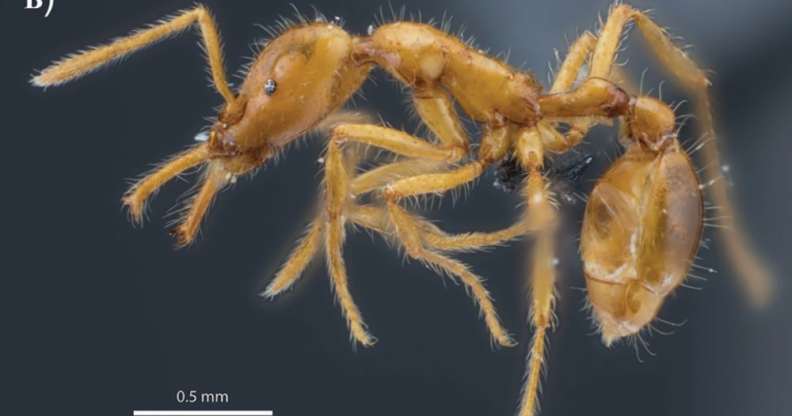‘Beautiful’ new ant species given non-binary name to honour those ‘outside the gender binary’

Strumigenys ayersthey. (Douglas B Booher, Philipp O Hoenle/ZooKeys)
A newly-discovered species of ant has been given a scientific name ending with “they” as a tribute by biologists to the non-binary community.
In an effort to celebrate gender diversity, biologists have named an ant species in Ecuador with the suffix “they” rather than the traditional gendered Latin suffixes.
When it comes to species-naming traditions, a lot of new critters are named after people, such as pop culture icons or field experts. The practice only recognises two genders, however, with the suffix “-ae” denoting women and “-i” denoting men.
But the Strumigenys ayersthey, a miniature trap-jaw ant with shining cuticles and cartoonish eyes, ditches both altogether, using “-they” instead. Making it one of the first creatures in the world to have a gender-neutral suffix.
We guess this answers the age-old question of which would come first: Non-binary Brits getting legal recognition or having a very tiny ant named after them.
Welcome to 2021.
“‘They’ recognises non-binary gender identifiers in order to reflect recent evolution in English pronoun use – ‘they, them, their’ and address a more inclusive and expansive understanding of gender identification,” the team who discovered the ant wrote in a scientific paper published in ZooKeys.
The ant was actually discovered back in 2018 in the Reserva Río Canandé by Philipp Hoenle of the Technical University of Darmstadt, Germany, according to the New Scientist.
But it was sent in a small vial of ethanol to taxonomic expert Douglas Booher at Yale University, who realised that it was a new species altogether.
In realising it was a new genus of Strumigenys, Booher decided to name the ant after his friend Jeremy Ayers, an artist and activist who collaborated with Andy Warhol as one of the pop art legend’s muses.
In the late 1970s, Ayers set up an artistic community in Athens, Georgia, that birthed beloved bands such as alt-rock band REM and the B-52s, YaleNews reported.
“In the spirit of Jeremy – who would’ve shied away from himself being honoured – we provide a new suffix for new species names when using personal names,” Booher told the MailOnline.
In fact, the etymological tribute came out of discussions he had with REM singer Michael Stipe, who co-wrote the paper.
“I cannot think of another person who was more fascinated with nature and language than Jeremy, so this honour is a perfect fit for his memory and legacy,” he told the MailOnline.
Booher added: “All ant workers are female and non-reproductive in most cases, so there wasn’t anything special about the ant’s biological sex per se.
It was just a really beautiful and different ant species that stood out in a genus of more than 850 species.
“Because it was such a cool find, I wanted to celebrate this ant with a name that celebrates all biological diversity, which includes diversity among individuals, gender included.
“Moving forward, the ‘they’ can and should be used as a suffix to new species for those that want to be identified outside of the gender binary.”
Strumigenys, the pair wrote in the paper, are “one of the most diverse ant genera in the world and arguably the most morphologically diverse, exhibiting an exceptional range of mandible shape and function”.

